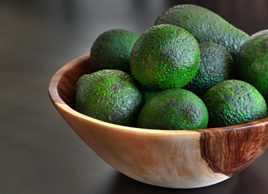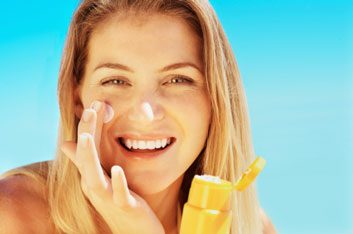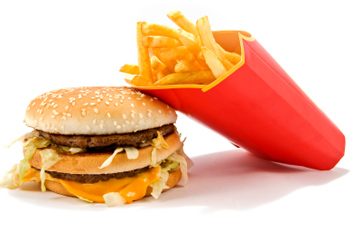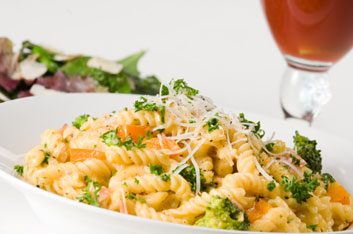
Best Health magazine’s 5th anniversary
This year (2013) marks the 5th anniversary of Best Health, and a lot has changed. Here are some of our favourites and some of the most important changes that have occured in the world of beauty, fitness, health, food and more.

Tanning beds
When we launched in 2008, few people were talking about the dangers of tanning beds, especially for teens. Yet the deadliest skin cancer, melanoma, is the second most common cancer among Canadians age 15 ?to 34. And tanning-bed use before age 35 increases melanoma risk by a shocking 75 percent. In 2009 we decided to bring attention to the situation with our article, “Let’s Outlaw Tanning Beds for Teens,” and over the next four years we have continued to update you on the legislation falling into place across the country.
Also, last May marked the Canadian Dermatology Association’s first “Melanoma Monday” national awareness campaign. (This year it’s on May 6.) Safer options to tanning beds and sunbathing? Self-tanning creams and bronzers, and covering up.

The “flush” fad
Colonics are not new, but over the past few years they’ve become more popular than ever-and that may not be a good thing. As we reported two years ago in “The Truth About Colonics,” people who get this non-medical procedure (which flushes fecal matter from the large intestine) say they feel “lighthearted” and “clean” afterwards. Often, they believe a colonic maintains a healthy colon; many women get them to lose weight. But, besides the cost of about $100 per session, medical professionals don’t recommend colonics. For one thing, while you will drop a few pounds after a colonic, you’ll gain it right back once you resume eating and drinking.

Buzzworthy foods
We’ve long known how great spinach, olive oil and oats are. Here’s a new crop of superfoods.
Escarole: This leafy green is a good source of many vitamins, including K. Vitamin K helps prevent cardiovascular disease and bone fragility. One cup has at least your daily requirement.
Avocado oil: Had you heard of this green-tinged oil five years ago? Now, it’s all the rage. It contains lutein to promote healthy vision, and monounsaturated fats, which boost levels of the good type of cholesterol. Also, it has a higher smoke point than extra-virgin olive oil, so it’s ideal for stir-frying.
Cavenda nuda: An oat with no hull, it looks and tastes like brown rice, and is high in fibre, iron and protein. Plus, it’s gluten free. Where did the name come from? “Avena nuda” means “naked oat” in Latin; Agriculture Canada, which developed this whole grain, added the “C” as ?a nod to its Canadian roots.

A healthy sex life
Five years ago, taking a pole-dancing workout class or reading an erotic novel-if you could even find one at regular bookstores-might have been embarrassing. Today, many people don’t bat an eyelid at these things: Pole dancing and “striptease” workout classes are popular, and erotica has gone mainstream (yes, due in large part to Fifty Shades of Grey). And why shouldn’t we put more emphasis on having a healthy sexual relationship? Studies say it combats aging, boosts immunity and may lower risk of cancer, heart disease and stroke. Since we launched, we’ve been proud to be a supportive resource Canadian women can go to for straight-talking, research-based and expert advice on how to improve intimate relationships. After all, it’s one more way women can embrace life more fully.

Sunscreen protection
Remember five years ago when SPF 15 was the most typical number you’d see on a sunscreen label? Then, in the summer of 2010, the SPF number started shooting WAY up, and we reported on the trend of super-high SPFs of 85 and even 100. That trend is now fizzling; according to the U.S. FDA, there are no adequate data demonstrating that super-high numbers provide better protection. There’s even a proposed Health Canada regulation requiring sunscreen products with SPF values higher than 50 to carry a label reading simply “SPF 50+.” So, as we’ve been updating you in the pages of Best Health, while SPF 15s are on the wane, the standard now seems to be SPF 30-which is the minimum SPF recommended by the Canadian Dermatology Association. We’ll continue to stay on top of this evolving science.

“Green” Beauty
For the past five years, we have been celebrating and reviewing beauty products of all kinds, from the mainstream to the exclusive. An area we like to focus on is the “natural products” category, and right from the get-go we’ve brought you our beautiful “Green Winners.” We’ve seen, with each passing year, more and more being launched-and they are no longer found only in niche beauty boutiques and health food stores. Today, they’re in drugstores and supermarkets, too. In fact, there are so many more, and so much interest in them, that we have just run our second annual massive roundup (in our January/February issue) in addition to “Green Winners.” The category has truly gone mainstream.

Interval training
Ever since we launched, the evidence has been growing that interval training is a workout that really pays off. Interval training alternates between vigorous, short bursts of exercise and lighter activity, and it is now known to burn more calories in less time-all while helping to improve your cardiovascular fitness.
An even more recent finding? That if you can’t fit in long workouts, small doses of activity will help-and the effect adds up. Going for a walk at lunch, taking the stairs, doing a weight-bearing exercise during TV ads-any movement is good movement. That’s why last year we introduced our “10-Minute Tuneups.”

Cognitive behavioural therapy (CBT)
CBT is a technique once used mainly in the field of mental health, but it’s becoming a popular way to treat physical ailments. CBT helps people understand how their thoughts affect their actions, then teaches coping strategies. In “New Ways to Heal Pain” in our September 2008 issue-our first year of publication-we cited a study that found CBT could treat both acute and chronic pain. Fast-forward three years to Summer 2011, when we reported in “Mind Over Food” that CBT can change how we think and feel about food to help us lose weight permanently. Now, it has also been found to help people sleep better (January/February 2013, “Morning Glory”). We’ll keep you posted on more CBT discoveries as they develop.

Superfoods
Every year there’s a new crop of buzz-worthy foods that studies indicate should be added to our diets to boost health.
Here are just four that were emerging as super-foods when we launched:
• Almonds (help lower cholesterol; a good source of protein, fibre and vitamin E)
• Black beans (help lower cholesterol and blood pressure)
• Blueberries (help reduce cancer risk; boost fibre)
• Dark chocolate (helps reduce blood pressure; improves mood)
And here are four recent must-eats:
• Kale (rich in vitamins A, C and K, as well as calcium and iron)
• Coconut water (has potassium to lower blood pressure; fat free)
• Quinoa (high in vitamin B, protein)
• Soba noodles (rich in B vitamins, magnesium and fibre, which reduces the risk of cardiovascular disease)

Menu labelling
Not long ago, most chain restaurants’ only “healthy” option was a limp salad, usually an afterthought on the menu (Subway has long been one exception). But consumers now demand a range of good-for-you -or, at least, better-for-you-options. Giants like McDonalds and Tim Hortons have added healthier meals to their menus, and the industry has also reacted to the concern over trans fats and excess sodium.
There’s been progress-but as our article in the March/April 2012 issue, “Fast-Food Nutrition Revolution?” stressed, more can be done. We created a petition for the government to make nutrition labelling on menus mandatory; find it at besthealthmag.ca/petition.

Workplace stress
The world of work has changed hugely in the past five years. The difficult economic climate has resulted in job losses, while those who remain employed contend with increased workloads, longer hours, job insecurity, belt-tightening and rumours of layoffs. And with the proliferation of smartphones, connectivity is a constant, blurring the line between our work and personal lives. A 2012 study that monitored more than 22,000 female health professionals in the U.S. over 10 years found that women with significant job stress are 67 percent more likely to have a heart attack than women less stressed out by work. To help you cope, we’ll continue to run articles about effective ways to deal with stress.

Meditation for better health
Chronic stress can cause weight gain, heart disease, depression and anxiety. We’ve reported over the past five years that exercise, a balanced diet and activities like de-cluttering or watching comedies can help slash stress. Now, meditation has emerged as a top stress reliever. As our writer found in her two-part article, “Trying Meditation,” in our September and October 2012 issues, it takes practice. But even five minutes will instantly calm you. Plus, one recent study found that daily meditation improved cognitive scores after just one month. And it can help with chronic pain and addictive behaviours. Give it a go!

Sunscreens
Until recently, the only thing we consumers felt was important on a sunscreen label was the SPF number. Now, it’s common knowledge that SPF refers only to UVB rays, which are the ones that cause sunburn. Yet UVA rays are more dangerous: They penetrate deeper and contribute to skin cancer and aging. In fact, 95 percent of UV rays are UVA. Yikes! These days, while the SPF number still counts (the Canadian Dermatology Association recommends at least SPF 30), products must be “broad spectrum,” meaning they’ll protect to some degree against both UVB and UVA rays. Look for those words on the label-and reapply sunscreen often.

Obesogens
Why do some people struggle to keep weight off while others have no problem? There are, of course, many factors behind weight gain, besides the obvious diet and fitness equation; genetic disposition, metabolism, stress and poor sleep can all play a role. But two years ago we reported on new evidence that “obesogens”-hormone-disrupting chemicals found in the air we breathe and the food we eat-can also set some people up for lifelong weight battles. These chemicals, such as bisphenol-A, may alter the way that your body stores fat and regulates appetite. We’ll keep you posted on advances in the science of weight gain in coming issues of Best Health.

Dynamic duos
Best Health has observed that in the past few years, food science has focused more and more on how certain foods are healthier when paired up. We call these “Dynamic Duos.” Here are two:
Pasta and vinegar: Helps keep you feeling full
Vinegar contains acetic acid, which reduces blood-sugar spikes that come after having starchy foods high in carbs like pasta, rice and bread. A steadier rise in blood sugar reduces hunger, helping prevent weight gain. recipe idea Pasta salad tossed with a wine vinegar and olive oil dressing.
Salmon and sesame seeds: Reduces PMS
Salmon is one of the few food sources of vitamin D. Just a half-can has more than your daily needs. And if you eat your D with calcium, you can lower your risk of PMS symptoms by 30-40 percent. Sesame seeds are a source of calcium (as are dairy products, almonds, etc.). recipe idea Sal-mon burgers with sesame seeds mixed in.

Happiness
At the end of 2012, we published a story about what makes people happy. The first-ever World Happiness Report from the United Nations had just come out, and it ranked Canada as fifth happiest among all nations after Denmark, Norway, Finland and the Netherlands. And wealth isn’t what counts most: Once basic needs are met, happiness varies more with the quality of relationships and other factors such as job satisfaction and health. What about “retail therapy”? Don’t go there: Researchers say a love of possessions can undermine how we feel about ourselves, costing us personal relationships and, ultimately, happiness. Instead, we can find contentment nurturing relationships we enjoy, which, beyond friendships, could include doing charity work. Stay tuned; in future issues we’ll have more on finding happiness.

Skin care
In 2008, if a friend told you a new generation of product called BB creams would be in stores by 2011, you’d have said BB what? Wildly popular, they aim to save you time and money, acting as moisturizer, foundation and, often, sunscreen. What’s next? CC creams.

Cervical cancer
Its incidence and mortality have been dropping at a rate of 1.4 and 2.9 percent a year, likely due to regular Pap tests. And the immunization of children against HPV that began across Canada just over five years ago should greatly reduce this cancer’s incidence in future.

Yogurt
Five years ago, Athens might have been the only place you’d see Greek yogurt. Now everyone can attest to its irresistible creamy deliciousness. Nutritional bonus? It has up to double the protein of regular yogurt. To avoid added sugar, buy low-fat, and add your own chopped fruit.

Sex
In our first year, 2008, we reported on new libido-boosting gels and patches poised to hit the market, and a drug for women- “the pink Viagra”-that was in the works. Update: The FDA has since opposed this pill’s development. We’ll keep you posted, but meanwhile, see our article on how to make vacation sex last.
